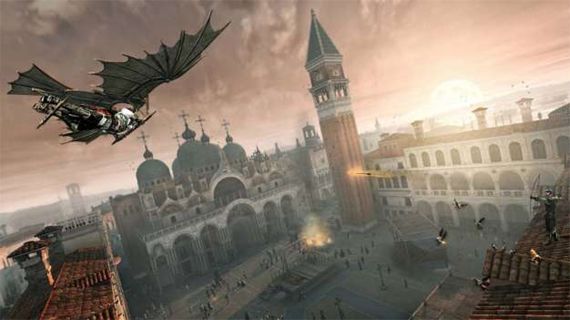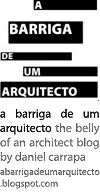Enough
Published Wednesday, December 30, 2009.
Muji’s mission statement for the New Year raises a couple of interesting issues relevant to the wide world of design culture. The initial premise is the focus on providing products that are “enough” and not necessarily “the best”. Basically, the idea is that we should aim to design goods that are adequate to the customers needs. Now the truth is that we live in a world where many of us are drawn to the concept of “top of the line”, even if that may not be the most rational choice regarding our own personal parameters. Say, for example, that you want to buy a mobile phone. You may fancy for the best mobile the market has to offer. You start desiring that Iphone or that Blackberry you’ve read about, even though you may end up not using a tenth of all the functions it has to offer. You’re fancying the object, not the tool that’s adequate to you.
Another example of this trace in contemporary consumption culture is a digital camera. Some people pay a lot of money for a top camera even though they have never processed (or plan to process) a RAW image file. Maybe they don’t even know what RAW is. It takes a lot of dedication and time to fully explore a powerful photographic camera these days, but again, it becomes a yearning for the object, that wonderful camera you’ve fallen in love with. And you may end up doing this in many other things in life, like that premium sound system you bought, even though you don’t have a living room big enough to sustain it. Or the lifestyle to invest some quality time into listening to that huge CD library you possess.
I’m not saying there’s anything wrong with having desires in life. But when it comes to consumption, often it’s not rationality that’s driving the consumer’s choices. And this is where sustainability comes into play. Because sustainability lies in the adequate use of resources to provide for the needs involved. It is, as Muji’s message states, a matter of minimalism, not as a style, but as a paradigm for a new economy.
Unless we adopt values informed by moderation and self-restraint, the world will find itself at an impasse. All people living today deep down are probably already beginning to consider greater self-restraint as a way of life.
So I was considering these ideas and wondering how they also relate to the field of architecture nowadays. We may still regard architecture as a realm for experimentation and technological innovation. But if we are not applying those values to provide for a rational use of materials and construction processes, aiming for the adequate needs of the users, then, we are failing to install an ethical form of practice. Experimentation is only relevant if guided by rationality. It is not a value in itself.
Via Core77.

Knit graffiti. Now that’s funny. Check the website of Magda Sayeg and her blog Knitta Please for more. Via Begin Being
Songs about cities [1]
Published Tuesday, December 29, 2009.Telegraph Road, Dire Straits, 1982.
[I] was driving down that road and I was reading a book at the time, called Growth of the Soil, and I just put the two together. I was driving down this Telegraph Road… and it just went on and on and on forever, it's like what they call linear development. And I just started to think, I wondered how that road must have been when it started, what it must have first been. And then really that's how it all came about, I just put that book together and the place where I was, I was actually sitting in the front of the tour bus at the time.
Inspired by the expansion of suburban Detroit, Michigan, Telegraph Road is a universal portrait of the close relationship between the evolving urban space and the human lives that dwell within. The song’s narrative begins with the tale of a man’s individual journey into the mainland, followed by the steady expansion of the built landscape along the path. The musical structure is divided into three separate acts: a crescendo narrating the growth of the city, up to 5 minutes; a slow decline reflecting the stagnation of the industrial boom, the consequent unemployment and personal crisis, up to 9 minutes; and a slow rebirth, expressing hope in a better future ahead. Telegraph Road was written by Mark Knopfler and was originally released in the Dire Straits album Love Over Gold, in the year 1982. A shorter version of this song can be found on the live album Alchemy, recorded in 1984.
Top 10: The architecture of computer games, reloaded
Published Thursday, December 24, 2009.
Heaven forbid The Architect’s Journal from making a serious article about the architecture of computer games. No doubt they would be prohibited from using the architect's secret handshake ever again. Fortunately I'm here to save the day with my own scoop on the 10 greatest architectural achievements in video game history, after the jump. Click to expand. [+/-]
One day all critics will be supermodels
Published Tuesday, December 15, 2009.
Kneel, you middlebrow old philistine you!
Pedro Gadanho reflects upon the rise of the middlebrow as a representative symptom of the digital age. The digital landscape of social networks and blogs provided new grounds for the ascension of unaccredited participations in the realm of specific, once closed, fields of knowledge. It would be wise, however, to consider the differences between the cult of the amateur and a wider notion of open source culture, and its likely implications to a new paradigm of architectural criticism.
One of the first questions to be asked is whether the internet is a platform for accreditation of what is to be considered a relevant form of practice. To that regard, one could say that what makes digital media so effective is also what afflicts it the most. The most successful blogs are aggregators of information, aspiring to provide their readers with the latest eye-candy available. If you follow some of them on your regular feed reader you’ll realize it takes only minutes until the latest press release gets published in a competition to see who’s first. That said, most of these blogs are not really aiming to contribute to a critical debate about architecture.
On the other hand you’ll find many blogs out there trying to do just that. And although most of them have much less visitors, they probably reach an audience that’s actually interested in reading what they have to say, instead of merely browsing through the visual gimmick of the day.
In the chaotic sea of web information, the user becomes the editor and the critic. It’s up to the reader to establish its own criteria of what is relevant. Subjectivity becomes the key, as one cannot be a neutral recording machine of the infinite stream of information. So even though subjectivity establishes a problem of knowledge, it’s our own personal filter that allows one not to sink in irrelevant details and observations, establishing a sense of what is in fact relevant and important.
What needs to be questioned then is not the role of these digital tools as «platforms aiming to reveal yet another potential claim to stardom», but what established circles of architectural knowledge are doing to provide an alternate kind of critical judgement. The real drama is not the ascension of the middlebrow but the fall of the highbrow in our current world of academic inflation. Many academies – particularly in our own southern European scene – have become contributors to a general culture of intellectual acknowledgment: something is considered respectable for the mere fact that it is recognizable within the codes, languages and typologies of its own mentors.
Since traditional printed media has customarily been closer to academic sources of knowledge, they’ve often become supporters to a narrow view of what is relevant, with an antagonistic but just as shallow approach to what is considered middlebrow architecture. And so you’ll find established architecture critics despising Bjarke Ingels as they reveal the utmost indulgence towards the latest whimsies of Zaha Hadid. The highbrow despises the star-system but, just as much, acknowledges the architect over the architecture.
This is so evident that you can pretty much guess what the establishment will say about any design from a reputable figure. When was the last time we read something original about Álvaro Siza, Souto Moura, Paulo Mendes da Rocha, just to name a few?
Highbrow critics will need to muster the bravery to go beyond the obvious if they want to reclaim their significance in the new landscape of information overload. The problem is that once you journey off the beaten track of thinking, chances are you’ll not be making many friends in the establishment. Thinking outside the box comes at a price not many are willing to pay. And if that’s the case, well then, I rather stick with blogs instead.
ENGLISH EDITION
The English-only edition of the blog A Barriga de um Arquitecto is no longer being updated. Please visit the main page to access new content, additional information and links.
ARCHIVES | ARQUIVO
September 2008 October 2008 November 2008 December 2008 January 2009 February 2009 March 2009 April 2009 May 2009 June 2009 July 2009 August 2009 September 2009 October 2009 November 2009 December 2009 January 2010 February 2010 March 2010 April 2010 May 2010 June 2010 July 2010 August 2010 November 2010 January 2011 February 2011 March 2011 June 2011 July 2011 October 2011 December 2011

10: Halo.
The original Halo introduced the player to an artificial planet of unknown alien origin, a gigantic space arc with an external living ecosystem and a complex web of underground tunnels. Later games in the Halo franchise would also introduce the setting of New Mombasa, a mega-city located on Mombasa Island in Kenya, the World’s busiest sea port of the 24th century and Earth’s first Space Elevator city.
9: Tomb Raider.
Tomb Raider revolutionized the 3D genre, becoming one of the most successful gaming franchises of all time. From the lost tombs of Qualopec in Peru to the City of Khamoon in Egypt, the original title of the series presented some of the most memorable built environments ever seen in a videogame.
8: The Elder Scrolls IV: Oblivion.
The fantastic province of Cyrodiil is one of the largest virtual environments created for a game, allowing the player to travel freely in over 40 km2 of open landscape and marvel at the extensive views of distant towns and mountain ranges.
7: Mirror’s Edge.
Mirror’s Edge is set in a futuristic dystopian city dominated by a totalitarian regime. It’s gleaming, clean environment is hampered by the presence of invasive surveillance, tracking all forms of electronic communication in order to reduce crime to nearly nonexistent levels.
6: Modern Warfare (Prypiat/Chernobyl).
The city of Prypiat was founded in 1970 to house the Chernobyl Nuclear Power Plant workers. It was abandoned in 1986, following the events of the Chernobyl disaster. The ghost city is portrayed in the game Modern Warfare as a gloomy, dark, lonely and scary place with gray skies and long, unkempt grass.
5: Fallout 3 (Washington D.C.).
Fallout 3 takes place in the year 2277, 200 years after a nuclear war. The game is set in a post-apocalyptic version of Washington D.C., taking the player on a journey through an area known as the Capital Wasteland.
4: Half Life 2 (City 17).
City 17 is a metropolitan area in Eastern Europe that forms the primary setting for Half-Life 2. The city features a variety of architecture types, from mostly Eastern European architecture dating from pre-World War II neoclassicism, to post-war revival of classical designs, Soviet Union modernism, and post-Soviet contemporary designs, as well as alien structures. The city is quite large, consisting of a railway station, a dilapidated canal system, underground road tunnels, and multiple communal living quarters and buildings.
3: GTA IV (Liberty City).
Liberty City is a fictional city portrayed as a generic version of the metropolitan area of New York. The city’s geography and alignment of districts features two major mainlands with a Manhattan-like central island (which contains a large park at the center, a reference to Central Park), and several smaller islands connected primarily by road bridges. Train services with lines running in the city are also present, providing GTA IV with one of the most convincing, living urban environments ever created for a video game.
2: Assassin’s Creed II (Florence, Venice).
Assassin's Creed II takes place in an open world with nonlinear gameplay, allowing the player to roam freely within several regions throughout late 15th century Italy such as Venice, Florence, and the Tuscan countryside. With its focus on real-world locales like The Duomo in Florence or Piazza San Marco in Venice and historical figures like Lorenzo di Medici and Leonardo da Vinci, this game offers an evocative setting filled with visual details that infuse the world with life and elegance.
1. Bioshock (Rapture).
Rapture is a massive underwater city that lies at the bottom of the Atlantic Ocean. Created by a fictional business magnate called Andrew Ryan, it is a utopian metropolis of Art Deco-styled buildings connected by a network of glass tunnels and a Bathysphere system. The city is completely self-sustaining, and all of its electricity, food, water and air purification are powered by the volcanic vents originated from the bottom of the sea. Rapture is intentionally isolated from the world, and the only way to access it seems to be bathyspheres taken down from the lighthouse perched on an island above. Bioshock presents a fantastically speculative world that is both a shining example of science-fiction and a brilliantly drawn architectural world.
Interesting links:
Sightseeing in Liberty City: Liberty City vs. New York City, A photoset showing the similarities between Grand Theft Auto 4 and real life, Flickr.
Game / Space, an interview with Daniel Dociu, BLDGBLOG.
Evil Lair: on the architecture of the enemy in videogame worlds, BLDGBLOG.
Los Angeles: Grand Theft Reality, City of Sound.
Visualizing Geographic Environments: City 17, Digital Urban.
Cities in Games: Chernobyl in Call of Duty 4, Digital Urban.
The Role of Architecture in Video Games, Gamasutra.
Videogames and architecture, Polygon Web.